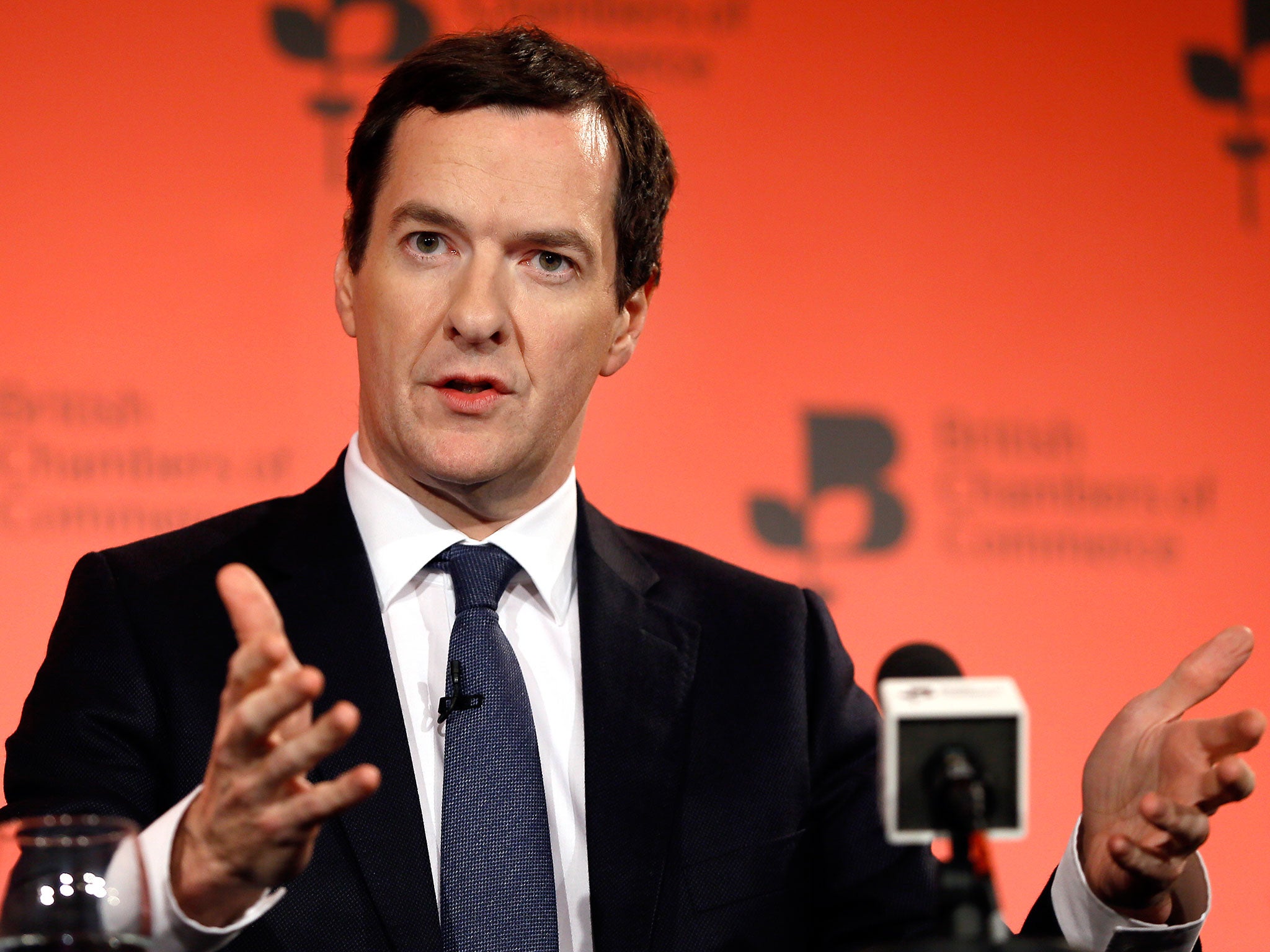George Osborne plans modest tax help in ‘risk-free’ Budget
Currently, people start paying the 40p rate of tax when they earn £42,385

Your support helps us to tell the story
From reproductive rights to climate change to Big Tech, The Independent is on the ground when the story is developing. Whether it's investigating the financials of Elon Musk's pro-Trump PAC or producing our latest documentary, 'The A Word', which shines a light on the American women fighting for reproductive rights, we know how important it is to parse out the facts from the messaging.
At such a critical moment in US history, we need reporters on the ground. Your donation allows us to keep sending journalists to speak to both sides of the story.
The Independent is trusted by Americans across the entire political spectrum. And unlike many other quality news outlets, we choose not to lock Americans out of our reporting and analysis with paywalls. We believe quality journalism should be available to everyone, paid for by those who can afford it.
Your support makes all the difference.George Osborne is preparing to modestly raise the level at which people start paying tax at 40 per cent as part of a “risk-free” Budget ahead of the European referendum.
Last week the Treasury confirmed that Mr Osborne would not go ahead with contentious plans to reform Britain’s pension system following concern among Tory MPs and Downing Street that the measures would create significant losers.
Instead, the Chancellor plans to concentrate his Budget on a couple of small, eye-catching changes to tax rates designed to put pressure on Labour and portray the Tories as the party of aspirant middle classes.
Currently, people start paying the 40p rate of tax when they earn £42,385. This is due to rise to £43,000 from April, and hit £43,300 next year. Senior government sources say Mr Osborne wants to “accelerate progress” towards a £50,000 limit by 2020.
Mr Osborne is not, though, expected to go ahead with plans to cut the top rate of tax from 45p to 40p. This, he has been warned, could be seen as pandering to the rich, even though figures suggest that when the top rate of tax fell from 50p to 45p tax receipts rose.
“George has been told not to rock the boat,” one cabinet source said.
Instead, the single person’s allowance – the amount of income one can earn before paying any tax – is set to rise faster than previously stated. It is due to rise to £10,800 from April and £11,000 next year. Osborne wants the allowance to reach £12,500 by 2020.
What is less clear is how Mr Osborne will pay for the tax changes, given the tight public finances and his pledge to eliminate the structural deficit by 2020.
One option would be to increase fuel duty, given the historic low oil prices. Senior Tories believe Mr Osborne can raise the levy in line with inflation and still stick to the terms of the Conservative Manifesto, which boasted of having “frozen” duty, because the party could argue in real terms the price had stayed the same.
Meanwhile, ministers are also preparing a partial climbdown over controversial plans to make hundreds of thousands of social housing tenants pay market rents once they earn more than £30,000 a year – under the Government’s so-called “pay to stay” policy.
The reformed proposals will mean that rather than social housing tenants facing massive rent rises once their household income rises above £30,000, a tapering system will ensure that those who earn just over £30,000 will pay only “a few pounds extra a week”.
This will rise gradually in line with income, and the most brutal increases, it appears, will not come in until a household’s combined income exceeds £50,000.
Mr Osborne will also use next Wednesday’s statement to announce the creation of a new British sovereign wealth fund to help finance new road, rail and power schemes.
High Speed 1 chief Nicola Shaw’s report on Network Rail’s future is set to be published alongside the Budget. She will recommend selling several lines, such as Greater Anglia and Wessex, under long-term concessions.
Budget 2016: What to expect
Pensions
George Osborne has scrapped his plans to unveil a radical overhaul of Britain’s pension system. He had considered introducing a flat rate of pension contributions that could hit high income earners, but backed down after protests from Conservative backbenchers. A source said: “He is not going to tear up the system of pension tax relief. There won’t be any changes.”
Tax
The salary at which workers start paying the 40p tax rate is to be increased. Mr Osborne plans to “accelerate progress” towards a £50,000 threshold for the higher rate of tax by 2020.
Fuel duty
He may seek to boost the Treasury coffers by increasing fuel duty. One minister told The Sunday Times: “The simplest way to raise cash is to put 2p on petrol. Prices are so low that people will hardly notice the difference.”
Rail
The Chancellor is set to sell off chunks of Network Rail, which owns 20,000 miles of tracks and most of the big stations. He is keen to move some of Network Rail’s £38bn debt off the government’s balance sheet.
Join our commenting forum
Join thought-provoking conversations, follow other Independent readers and see their replies
Comments